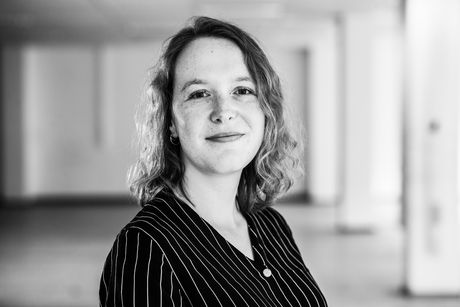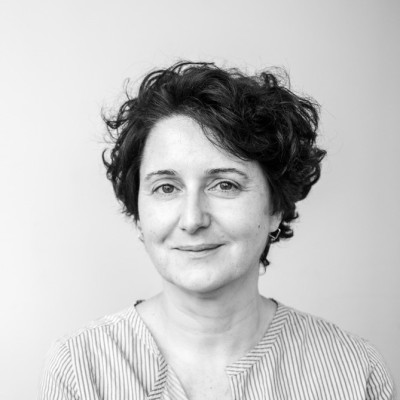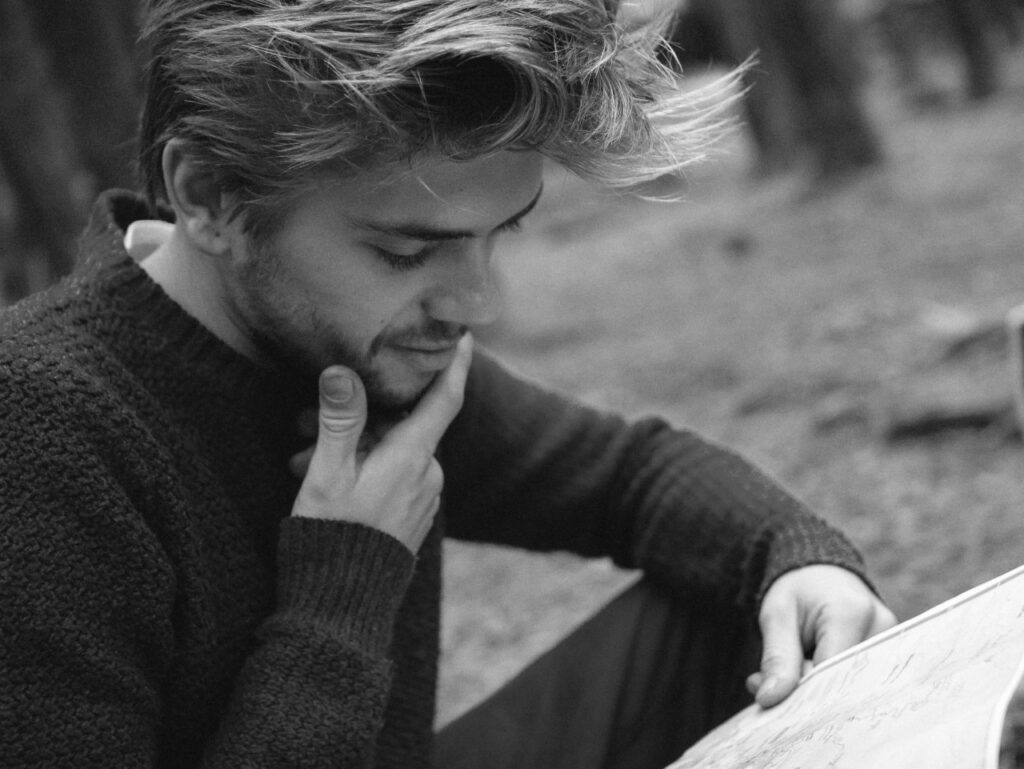Together with Delta Atelier, we have embarked on a journey of dialogue, exploration and knowledge sharing around the challenge of circular (urban) ports. Explore this journey supported by several working sessions, debates, research and exhibitions in the context of the ‘cultural space’ created by the International Architecture Biennale Rotterdam and its Brussels component You Are Here. While some of the proposed actions were temporary, others have become permanent and tangible.
About the Delta Atelier
The Delta Atelier kicked-off in 2018 in the context of the cultural space created by the International Architecture Biennale Rotterdam (IABR) and its Brussels’ component You Are Here (YAH).
The Delta Atelier manifested itself in many meetings, conversations, work sessions, brainstorms, debates, work notes, research, designs, conferences and exhibitions. The results are many and diverse: acceleration programs in the Netherlands and Belgium, spin-offs and new cross-border collaborations (AWB, 2021).
The Delta Atelier was supported by the Ministry of the Interior in Flanders and the Ministry of Foreign Affairs in the Netherlands.
Circular (City) Ports in the Delta
Both in the exploration Lage Landen 2020-2100 (Low Lands 2020-2100. A foresight) and in the context of the IABR-2018+2020-THE MISSING LINK and You Are Here (YAH) ports and the circular economy were a recurring focus and priority.
The Circular Ports of the Delta was a theme of the Delta Atelier Working Conference (mid-2018), where four trajectories were set out, focusing on the four scales at which circular ports operate: the company, the (city) port (city-port interface), the port region (regional scope of the port) and the Delta region (circular mainframe).
The Circular (City) Port scale was initiated by the Delta Atelier and Circular Flanders as a community of practice, together with the Dutch and Belgian port authorities, the Dutch Ministry of the Interior, the relevant port cities, public officers and port experts. The exploratory process (Oct 2018 – Apr 2021) was about the future transformation of (city) ports, in which circularity will play an important role.
We are in the middle of something
In the transition to a circular economy and cities, our ports are key. Today, the Delta’s ports are still largely logistics transit ports, importing finished goods and materials from distant countries for distribution across the continent. With the transition to a circular economy and the re-shoring of production to our cities and region, ports will take on a new function: as energy producers and distributors, material banks, recycling yards, innovative industrial port clusters or as the base of new maritime economies.
Source: International Architecture Biennale Rotterdam and Architecture Workroom Brussels, for Delta Atelier
Joachim Declerck graduated from Ghent University as an engineer-architect. He later followed the international postgraduate course at the Berlage Institute in Rotterdam. He stayed at this institute from 2005 to 2010, where he led the professional research and development programme from 2008 onwards. On behalf of the Berlage Institute, he was co-curator of the 3rd IABR, Power – Producing the Contemporary City (2007) and of the exhibition A Vision for Brussels – Imagining the Capital of Europe (2007).
The thread running through Joachim’s work is the use of design and spatial development as levers for the realisation of important social transitions. In 2010, together with Roeland Dudal, he founded the European think-tank Architecture Workroom Brussels (AWB) for innovation in architecture, urban and territorial development. AWB is intended as a platform to create the space and conditions for innovative architecture and research by design. He focused on longer strategic lines of work such as visionary housing, productive landscapes, caring neighbourhoods and the productive city.
(…) Joachim has been a guest professor at Ghent University (BE) since 2014.
Contact: jdeclerck@architectureworkroom.eu

Joachim Declerck
Partner at AWB
Chiara Cicchianni graduated in 2016 as a Master of Town and Country Planning from Tongji University in Shanghai, and in 2017 obtained her Master of Urban Planning and Policy Design from Politecnico of Milan. Her master’s thesis explored urban regeneration, investigating the role of public services in social integration, in the context of the Adriano neighbourhood in Milan. The research carried out as part of her master’s thesis in China also focused on urban regeneration within the Shanghai context, looking closely at the planning of public spaces with a social inclusive approach. During her studies she worked on the temporary regeneration of Piazza Castello Sforzesco in Milan during Expo 2015, as part of the ‘Navicata 14’ team. What’s more, she had the chance to work, during her stay in Asia, in the field of Landscape Design collaborating with the team of the ‘Green Fortune’ office.
Since August 2018, Chiara has been a collaborator at Architecture Workroom Brussels (AWB). Her experience in mapping and spatial analysis and representation plays a key role in her work within the AWB-team. She was involved in the production of materials for the BULB (Brussels Urban Landscape Biennale) exhibition at BOZAR in September 2018. Chiara is also working on the IABR-Atelier ‘East-Flemish core areas’ project, looking at the future spatial transformations the area will face. The ‘North Sea Port District’ project is related to the same field and similar topics. She was also part of the ‘Circular (City) Ports’ trajectory examining the ports’ transition towards a circular economy, which involves a research project and a track that develops a video-narrative on the topic of Circular Ports, where the context of the Delta regarding circularity is explained throughout the involvement of different actors and parties. Chiara is part of the AWB’s team working on the EU’s Urban Europe programme on the Food-Water-Energy connection, and part of an international consortium that is working on action-research on ‘Agro-ecological Urbanism’.
Contact: ccicchianni@architectureworkroom.eu

Chiara Cicchianni
Collaborator at AWB
Contact: ebierens@architectureworkroom.eu

Emma Bierens
Collaborator at AWB
Nadia Casabella is an engineer-architect (Barcelona, Polytechnic University, 1997) with a master’s degree in regional planning and urbanism (London School of Economics/LSE, 2004). She is associate professor at the Faculté d’Architecture La Cambre-Horta (Université Libre de Bruxelles/ULB) and was co-initiator within the Faculté d’Architecture La Cambre-Horta of the research laboratory LoUIsE (since 2011).
Together with Bert Gellynck, she founded the office 1010 architecture urbanism, where she leads design research on circular area development, including M4H+ (IABR, Stadshaven Rotterdam 2018), Antwerpen Innovatieve Stadshaven (Vespa, 2019), Circular (CIty) Ports (Vlaanderen Circulair-OVAM, 2020), Segementatie VII (Flemish Department of the Environment, 2021). She writes and lectures on topics related to urban planning and circular metabolism.
Contact: nadia@1010au.net

Nadia Casabella
Partner at 1010au
Ian Kuppens is an engineer-architect (University of Ghent, 2017) with a master’s degree in urban design. His master thesis ‘Re-Productive Brussels’ examined the intrinsic relationship between urbanization, economic, social and ecological dynamics with a search for a more generative urbanism. As an associate at 1010au, he further immersed himself in the themes of circular economy, urban metabolism and essential economy with research in circular area development (M4H+, Stadshaven Rotterdam 2018), interweaving of live-work activities (Segmentation Study VII, Flemish Department of Environment 2021) and design studies for mixed urban development projects (Lage Weg Hoboken, Asiat-Darse Vilvoorde, Innovative Stadshavens Antwerp), among others.
In the Circular (City) Ports trajectory, Ian went out to talk to actors active in key city ports in the Delta. Documenting opportunities, challenges and case studies, brought out a wealth of information. Subsequent working tables fueled the design research, among other things captured in the ‘Building Blocks’.
Contact: ian@1010au.net

Ian Kuppens
Collaborator at 1010au
Get to know us
Meet the Research Team
Architecture Workroom Brussels (AWB) and 1010au took up the assignment on the Circular (City) Ports and investigated the shared chances and challenges, connections and opportunities by looking at different city ports and their current circular initiatives.
How change can be delivered (aka the missing link)
With ‘vision’ we make the theory of change as explicit as possible. Theories of change are the ideas and hypotheses (theories) that people, organisations and networks have about how change happens. The theories presented here for the circular port transition are based on assumptions about reality, what is at stake and how change can be brought about.
Is this the ultimate way to work on change? We are aware that different theories of change and visions can conflict with each other, and that the assumptions behind these visions and theories may not stand up to new developments, debates and counter-arguments. It is therefore important to understand our theory of change and the assumptions of different port actors and governments on which it is based.
Between ambitious goals and first movers
Top-down: ambitious goals
Circularity is becoming one of the key priorities at European, national, regional and local levels. The targets set impose very high standards for the future circular functioning of our everyday life, questioning the mode of production and the systems in which it is embedded. Looking at the past and future steps that need to be taken to realise such a systemic transformation, it is clear that there is a lack of a defined framework and an interpretation of the targets in terms of smaller stepping stones. The question is how these fundamental changes – related to sustainability policy, energy transition, the introduction of a non-fossil-based economy, together with digitalisation and automation – will actually become operational in our reality.
The Missing Link
The gap between the ambitious goals set at all levels and the many innovative practices is clear. It is the starting point for discussions, research and collaboration to understand how the bigger goals can be translated on the ground and how ongoing practices can be structurally managed to have a substantial impact.
Bottom-up: innovative initiatives
At the same time, many innovative circular initiatives are flourishing in the broad field of practice. They are very active in strategising about the coming transition, looking for new ways of functioning, new economic values and collaborations to accelerate the necessary shift towards circularity. However, they lack a structured framework in which to position themselves and where their efforts can be multiplied, scaled up and disseminated.




